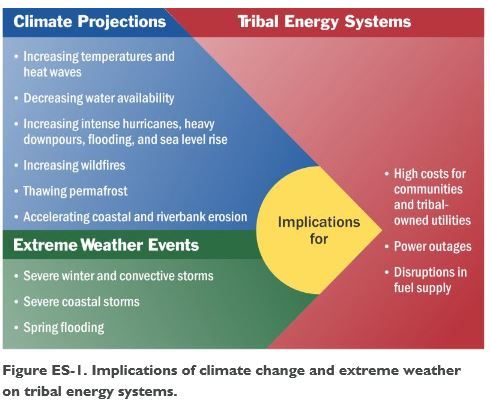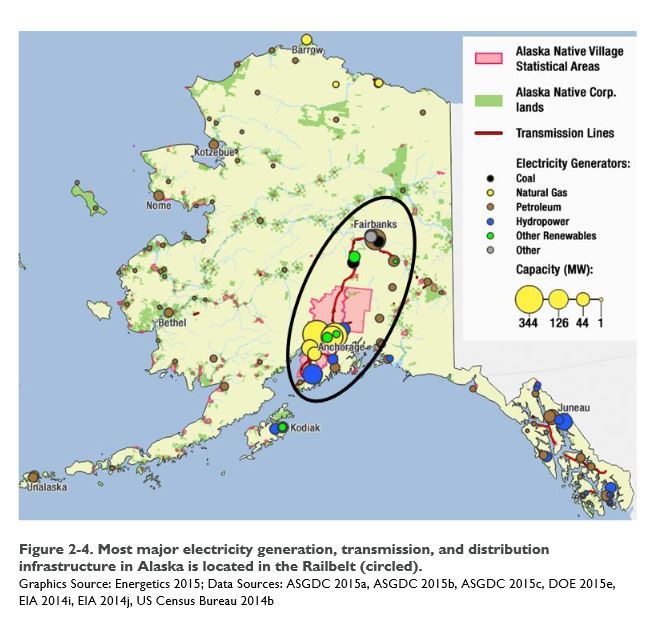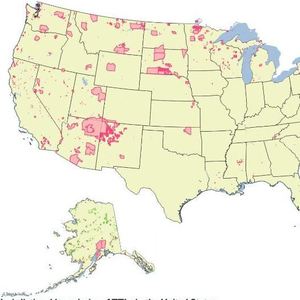DOE offers $6 million for Native American energy projects










U.S. Department of Energy
September 10, 2015
BY Katie Fletcher
This month, the U.S. Department of Energy issued a report showing threats to tribal energy infrastructure are expected to increase, and also announced its offered a $6 million grant opportunity to establish clean energy projects on tribal lands.
The report entitled “Tribal Energy System Vulnerabilities to Climate Change and Extreme Weather” was developed in response to President Obama’s Climate Action Plan. Specifically, Executive Order 13653 directs federal agencies to help communities strengthen their resilience to extreme weather and prepare for climate change. It is intended to serve as an authoritative resource to assist tribal leaders, federal, state and local governments, regulators and utility commissions, and energy asset owners and operators to strengthen tribal energy systems.
Regarding the $6 million funding opportunity announcement, the DOE is soliciting applications from Indian tribes including Alaska Native regional corporations, village corporations, tribal consortia and tribal organizations and tribal energy resource development organizations to install both facility-scale clean energy and energy efficiency projects and community-scale clean energy projects on Indian lands.
Over the years, the DOE’s Office of Indian Energy Department has invested nearly $50 million in 183 tribal energy projects. “Tribes are among the U.S. communities most vulnerable to the impacts of climate change,” said Chris Deschene, Director of DOE’s Office of Indian Energy Policy and Programs that issued the Climate Change Vulnerabilities Report. “Tribal lands, which are home to more than one million people, have a relatively high proportion of low-income residents, and tribes have limited resources to respond to climate-related impacts.”
Advertisement
Deschene adds that to address challenges proactively, tribal leaders need reliable data and analysis to make informed decisions as they work to develop viable strategies to ensure a secure and sustainable energy future for their communities.
The report assesses how climate change and extreme weather vulnerabilities specific to tribal energy infrastructure and systems in the contiguous U.S. and Alaska are projected to affect energy availability to Native American lands. Regions are examined by how climate change is likely to impact the infrastructure involved in supplying energy to tribal lands—including the many energy system components that are not directly owned or controlled by tribes.
The report shares that although tribal lands comprise nearly 2 percent of U.S. land, they contain about 5 percent of the country’s renewable energy resources. More than 9 million MW of potential installed renewable energy capacity is on tribal lands.
According to the DOE, climate-related events are already affecting the way that Indian tribes in the U.S. use, receive and produce energy. “Higher temperatures, water shortages and more frequent and intense disasters—such as flooding, wildfires, heat waves and droughts—are threatening the economic and energy security of what are among the nation’s most impoverished communities,” the report said.
Advertisement
Severe weather events like thunderstorms, tornados and winter storms can also damage the infrastructure tribes rely on to deliver power and fuel. “The wide ranging effects of climate change—from more intense storms, harsher droughts, sea level rise and escalating summer temperatures—pose an increasing threat to America’s energy systems and crucial infrastructure,” said Lynn Orr, DOE’s undersecretary for science and energy.
The report presented key findings for tribal consideration. One finding was increasing electricity expenses due to higher temperatures are likely to increase demand for air conditioning in the summer. Other key findings related to electricity generation include a greater likelihood of power outages due to damage to electric grid and generation infrastructure, more frequent disruptions in fuel supply due to transportation infrastructure or delays in rail or truck operations during severe weather and reduced electricity generation capacity for some power plants on tribal trust lands, depending on the type of generating facility and its location.
According to the report, few tribal trust lands or Alaska native villages directly own and operate the energy infrastructure that their communities depend on, meaning tribal energy systems are primarily vulnerable to off-site risks such as supply disruptions and higher energy costs passed down from external utility providers. Even if they own and operate energy infrastructure, they are subject to similar vulnerabilities if energy assets are located outside of their boundaries.
The DOE Office of Indian Energy plans to develop supplemental information for regional meetings with tribal meetings and other stakeholders, as well as short briefs on actionable resilience strategies for tribes.
The full report can be downloaded here.
Upcoming Events





